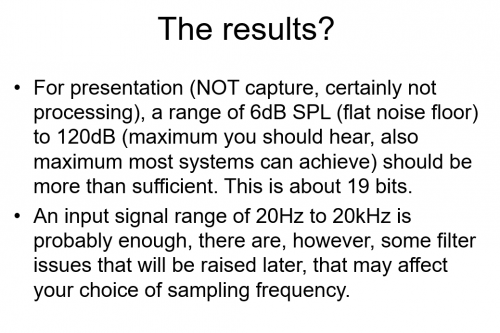I personally pay no mind to people claiming that stuff in the least significant bits are ruining anything in any significant way.
Yes but in all fairness the article posted in the OP was not intended for consumers but for beginner mastering engineers. Mastering engineers need to consider pretty extreme circumstances, which is why mastering rooms tend to have the very best listening conditions AND also, one or a pair of the very worst speakers, both extremes. I can just about hear dither noise in my studio on some recordings but not to the extent that I can differentiate what type of dither. I sometimes spend a few minutes with the volume whacked up (in an appropriate place) and audition different dither settings but it's more of a "just in case" rather than a "this is a crucial decision".
G







